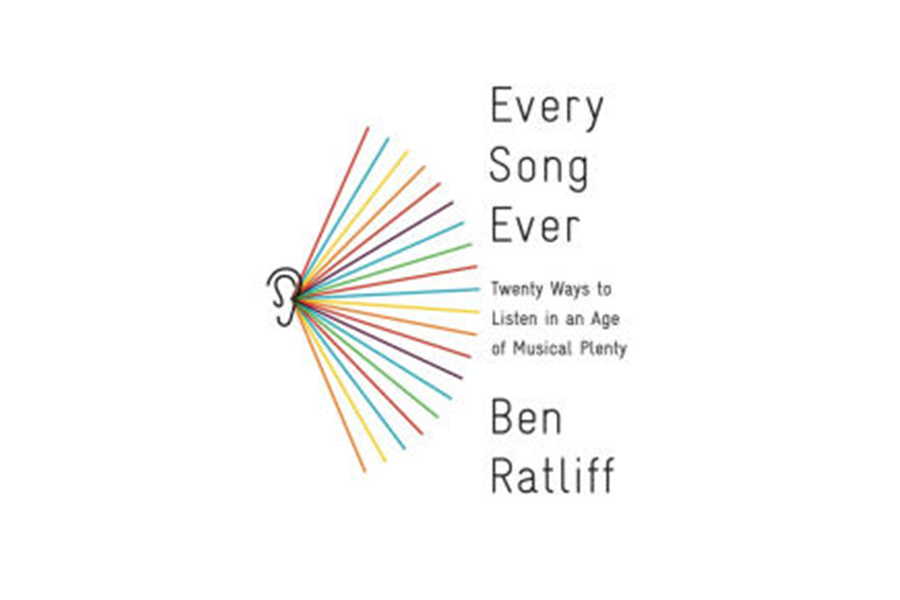'Every Song Ever' is a creative listener's guide to contemporary music
Loading...
Not so long ago, when you wanted to listen to something new, you headed to the record store. If jazz was your thing, you went to the jazz aisle, where the records (and later, the CDs) were arranged alphabetically: Clifford Brown, John Coltrane, Miles Davis, Eric Dolphy, and so on. If you were a classical type, you headed to that corner: Bach, Beethoven, Brahms, Copland, Dvorak, and on down to Zemlinksy. Rockers had their section, lovers of R and B had theirs, and those devoted to blues, country, folk, Broadway cast albums, and countless other genres all had their place to browse.
Having spent hours rummaging through those bins, I can attest to how exhilarating it was. To come upon the latest release of a Mahler symphony, or the newest album by Freddie Hubbard, the legendary trumpet player, was thrilling. As my friends and I flipped through bin after bin of records (and it was typically a group activity), we savored the experience and set the stage for the listening sessions to come.
In case you haven’t noticed, the world has changed. Records stores have disappeared, vinyl recordings are mainly a curiosity, and upon seeing CDs on my office desk, my students have said more than once, “I didn’t know people still had those.”
While one still encounters the occasional CD or a dusty turntable in the corner of a boomer’s living room, as Ben Ratliff reminds us, today, “we are listening in the time of the cloud.” As a result, music can now be acquired from a variety of on-line music services, which means a vast quantity of sounds are a few clicks away. The era of record bins is over; the age of Spotify has arrived. You will never again shop for records with your friends.
But don’t worry, for this brave new (aural) world has an upside. For the first time, as Ratliff suggests in his illuminating and thought-provoking book, Every Song Ever: Twenty Ways to Listen in an Age of Musical Plenty, how we listen to music might be “every bit as important” to music’s history and development as what the composer intended when writing it. Because we can now hear nearly anything we want – at any time, and without leaving home to do so – Ratliff believes we have the opportunity to take chances, to seek out new listening experiences, and even – perhaps – to start exploring connections that our collective musical parochialism has kept us from considering. To that end, "Every Song Ever" might serve as a sonic Baedeker, a guide for a new era of listening.
In 20 beautifully rendered essays on subjects like repetition, slowness, speed, sadness, virtuosity, improvisation, loudness, and intimacy, Ratliff establishes provocative and thoroughly unexpected connections between genres of music that the average listener – or even the sophisticated one – would not have perceived. Chapter by chapter, Ratliff, who writes on jazz for The New York Times and is the author of a superb book on John Coltrane, explores the links between compositions that seem to have absolutely nothing in common. Indeed, the pieces Ratliff compares in each gem-like essay usually emerged from disparate cultures, regions, and musical traditions. And they are often separated by decades (or even centuries). But time and again, Ratliff, a master of enlightened juxtaposition, discovers connections that leave one mesmerized.
Exploring the art of improvisation with a prose style readers will savor (and writers may envy), Ratliff calls this mysterious inventive process a “metaphor for doing what you can while you can, for not waiting.” He then meticulously probes several examples of improvisation by locating utterly unexpected musical similarities, first between the works of jazz saxophonist Eric Dolphy and guitarist Jimi Hendrix, and then between Hendrix and the contemporary classical composer Iannis Xenakis. As you are pondering these extraordinary connections, Ratliff, who seems to have listened to nearly everything, proceeds relentlessly, linking pieces by Hendrix and Xenakis to the work of a Korean cellist, Okkyung Lee. By the end of the chapter, one is left to reflect on the points of contact Ratliff has established between artists, who, in your wildest dreams, you never imagined had anything in common.
In a chapter on sadness in music, Ratliff looks for connections between the creative output of the English folk artist Nick Drake, the flamenco singer Manuel Agujetas, and the heavy metal bands Slayer and Black Sabbath. By the chapter’s end, I was prepared to test the proposition that there is much to be gained by listening to flamenco, followed by “War Pigs,” the Black Sabbath classic.
It is unclear if having a vast reservoir of music to draw on will mean, as Ratliff hopes, that we might now step outside our narrow listening communities. But after reading "Every Song Ever," I’m willing to explore music that was once alien and even unappealing. Sure, I’ll miss rummaging through record bins with my buddies, but it is a relief to realize that we now inhabit a world in which it is possible to get hold of any Shostakovich symphony you want while sitting at your kitchen table at 3 am.
Jonathan Rosenberg, who writes about music, teaches American history at Hunter College and the CUNY Graduate Center.








